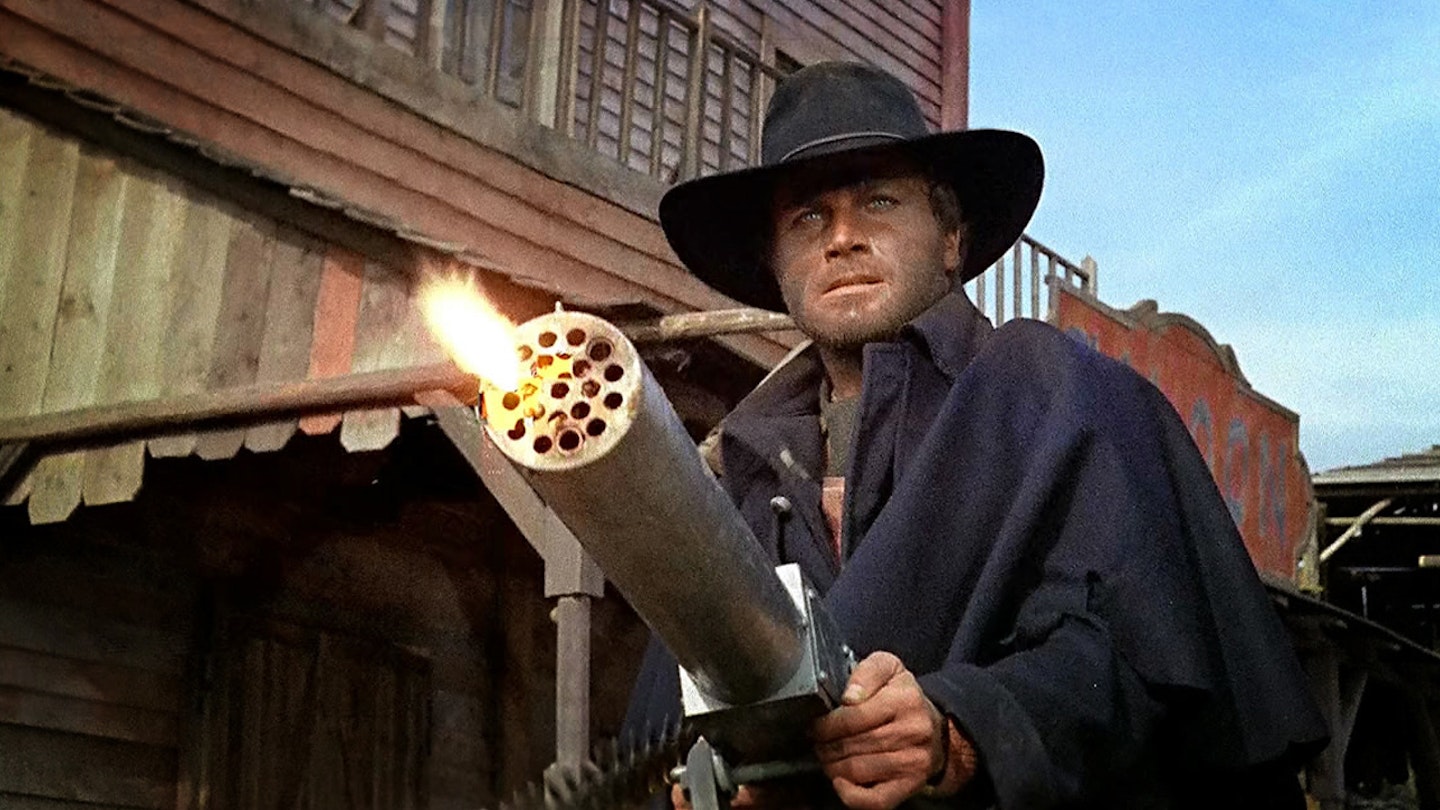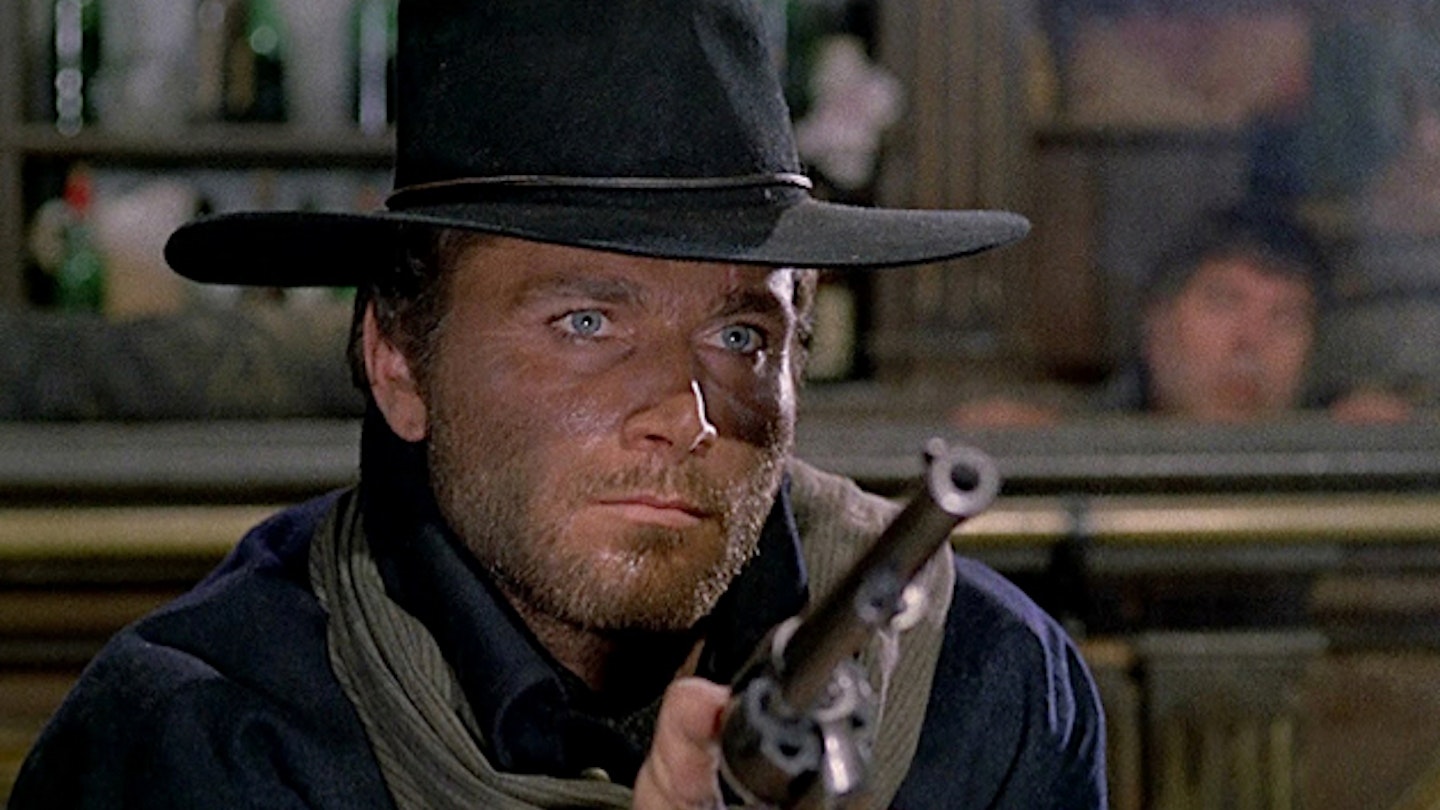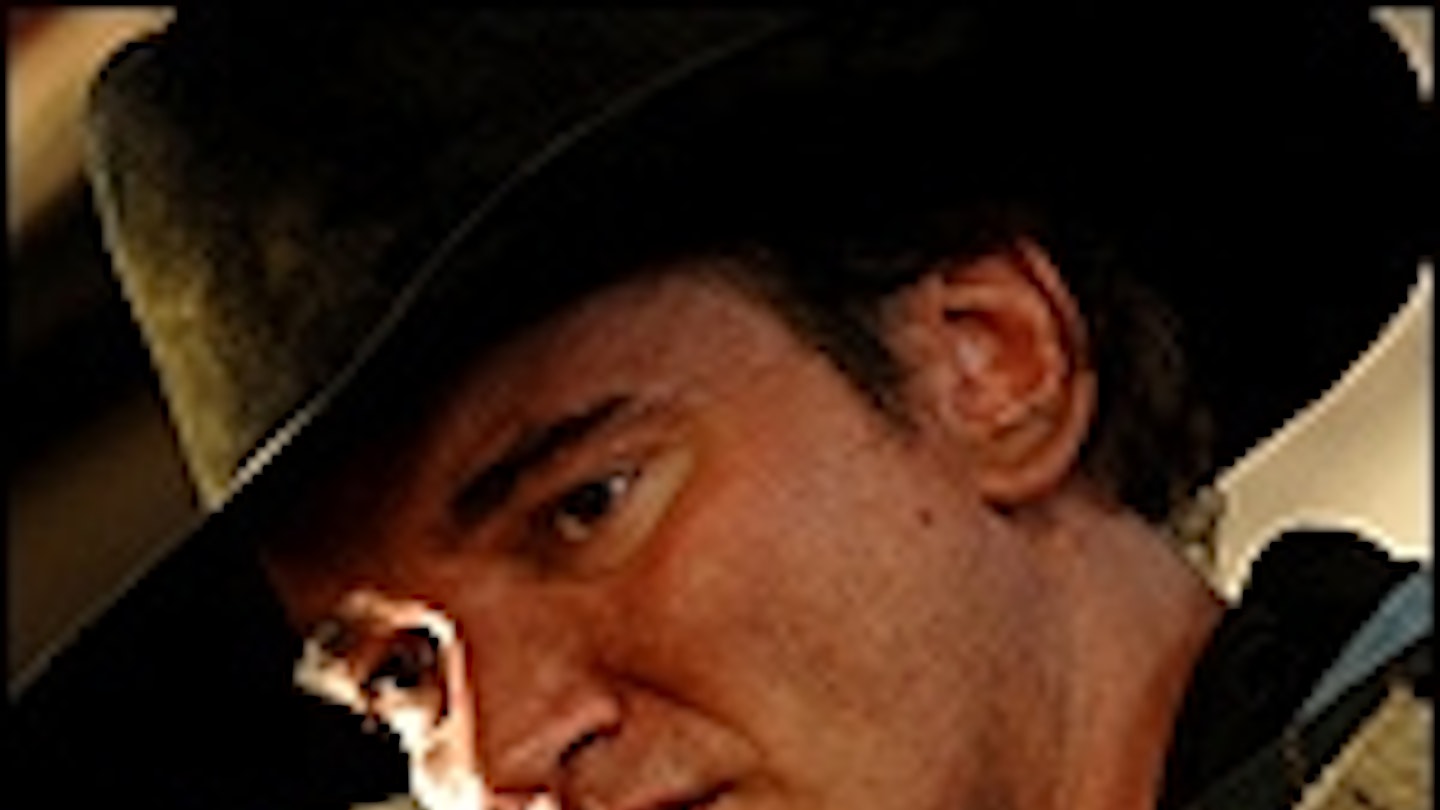Made in 1966, this was unreleased in Britain at the time because of its excessive violence: for decades, all that could be seen of the film were the excerpts seen in The Harder They Come, where Jimmy Cliff's Jamaican bandit models himself on Nero's lone gunfighter. It is at once an imitation of Sergio Leone’s A Fistful of Dollars and an extension of Leone’s spaghetti western style into even more baroque and bizarre areas.
The blue-eyed Django (Nero) walks into town across a muddy plain, painfully dragging a coffin behind him, accompanied by his memorably wailing theme song. Tiring of jokes about how he's going to need that wooden box if he keeps sassing the baddies, Django arranges to meet the villain's hundred top guns on main street and, as they gallop wildly towards him, calmly unpacks a machine gun from the coffin and mows them down.
Thereafter, it gets more grotesque and gothic as a hypocritical priest is forced to eat his own severed ear. Django, his hands smashed and unusable, has to chew off the trigger guards of his pistols and use a grave marker to work the guns in a graveyard shoot-out climax.
After Leone, Sergio Corbucci was the genius of the spaghettis, following this up with a run of gritty, political greats: Companeros, A Professional Gun, The Hellbenders and The Great Silence. Django, a box office sensation in Europe, inspired dozens of official and unofficial sequels, including Django the Bastard (which has the same ghost gimmick as High Plains Drifter) and the surreal Django, Kill!; Nero returned to the role in 1987 in Django Strikes Again.




